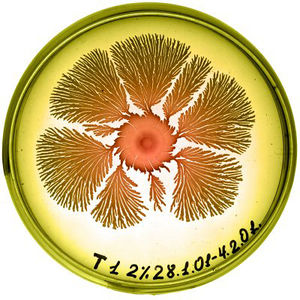This post is a "thought experiment" that assumes the Elvenar world map is created piecemeal, using two very simple algorithms. Further, the program needs no awareness of spirals, rhomboids, nor of hexagonal rings that contain more than 6 relic sectors and/or 6 cities.
- We'll assume that there's a comprehensive set of master records for each world map, and that your particular version of that map is mostly pointers to the master map. The creation of your private instance uses the same procedures.
- The city in the exact center of the map is seeded, but thereafter cities are processed in IDentity order.
- Starting at 12 o'clock in the adjacent hexes, Relic sectors are assigned in Ring 1, using a clockwise rotation.
See R001 - R006 in the following diagram.
- Starting at 1 o'clock in the adjacent hexes, once removed, City sectors are assigned to the odd numbered positions in Ring 2, using a clockwise rotation.
See C01 - C06 in the following diagram.
- If a sector has been previously claimed, it is simply skipped.
Here's the chart from processing the first 37 cities. (If you want a closer look, Ctrl+ScrollWheel will zoom the window in most browsers.)
|
| Ring | City | Ring | City |
|---|
| Ring 0 | C00 | Ring 6 | C19 | | Ring 2 | C01 | Ring 6 | C24 | | Ring 2 | C02 | Ring 6 | C27 | | Ring 2 | C03 | Ring 6 | C30 | | Ring 2 | C04 | Ring 6 | C33 | | Ring 2 | C05 | Ring 6 | C36 | | Ring 2 | C06 | Ring 6 | C40 | | Ring 3 | C08 | Ring 6 | C41 | | Ring 3 | C09 | Ring 6 | C46 | | Ring 3 | C11 | Ring 6 | C50 | | Ring 3 | C13 | Ring 6 | C54 | | Ring 3 | C15 | Ring 6 | C58 | | Ring 3 | C17 | Ring 7 | C38 | | Ring 4 | C07 | Ring 7 | C39 | | Ring 4 | C10 | Ring 7 | C42 | | Ring 4 | C12 | Ring 7 | C43 | | Ring 4 | C14 | Ring 7 | C45 | | Ring 4 | C16 | Ring 7 | C47 | | Ring 4 | C18 | Ring 7 | C49 | | Ring 5 | C20 | Ring 7 | C51 | | Ring 5 | C21 | Ring 7 | C53 | | Ring 5 | C22 | Ring 7 | C55 | | Ring 5 | C23 | Ring 7 | C57 | | Ring 5 | C25 | Ring 7 | C59 | | Ring 5 | C26 | Ring 8 | C37 | | Ring 5 | C28 | Ring 8 | C44 | | Ring 5 | C29 | Ring 8 | C48 | | Ring 5 | C31 | Ring 8 | C52 | | Ring 5 | C32 | Ring 8 | C56 | | Ring 5 | C34 | Ring 8 | C60 | | Ring 5 | C35 | Ring 9 | C62 | | ~ | ~ | Ring 9 | C63 | | ~ | ~ | Ring l0 | C61 |
|
The IDentity space is pointy-topped, but it's flat-bottomed, and the City IDentities oscillate near the 1 o'clock corner, all of which we have previously observed in the data, as anomalies. Vacating cities and assigning them to new immigrants, pretty much ring by ring, requires nothing fancier than walking down a (perhaps filtered) list that's in City IDentity order.
While I only processed the first 37 cities, turning the crank to find all 200 trading partners would just be more of the same. You'll note that the IDentity space is extra wide at the equator, it's a bit pear-shaped, and C41 and C49 are in EXACTLY the right positions to account for Rob15 and Adryell, the out-of-bounds traders that we were complaining about earlier.

